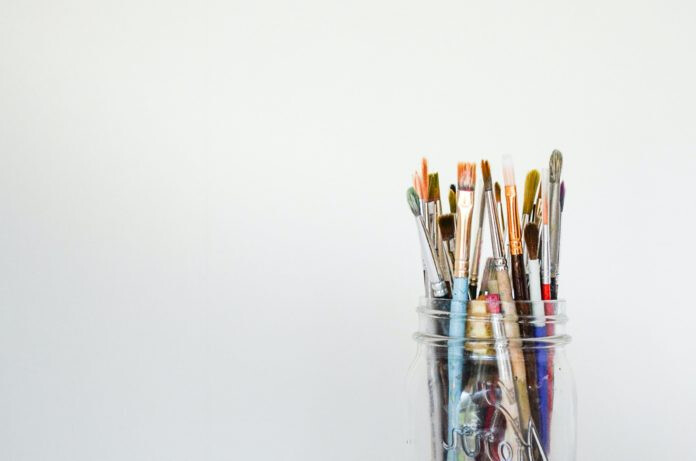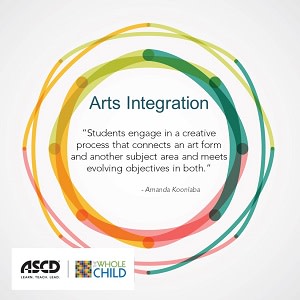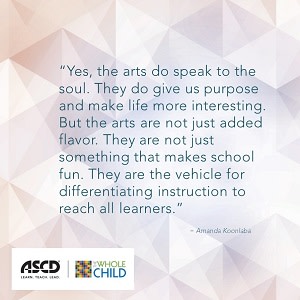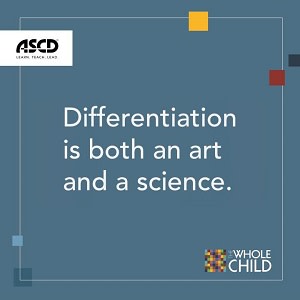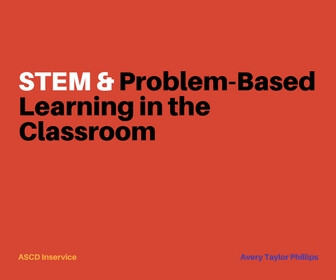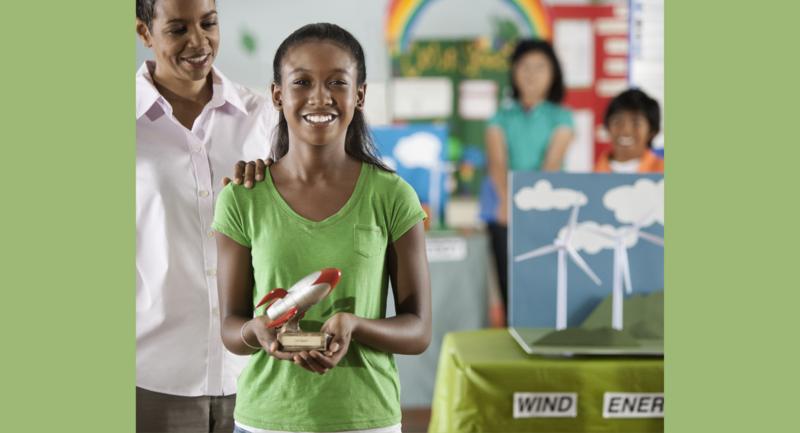As we find ourselves debating about the effectiveness of distance learning during this time, we wonder, as parents and teachers, about how the widespread closing of schools this spring might impact learning loss for our students. There is also a fear that, as school systems try to make up for lost learning, they will begin to determine what subjects are deemed important and what subjects somehow aren’t.
And often with these types of decisions, we find the arts on the cutting block.
There’s a history of art-focused cuts. My state of California alone saw a decrease in school arts programming in the 1970s when a state law approved the elimination of the arts from elementary teacher-training courses. Prop 13, which reduced property taxes in the state, also resulted in devastating cuts to the arts. And when NCLB was signed, schools cut back even further on the arts as testing in math and reading became the nation’s focus.
There are signs that this trend may continue. In April of this year, Burbank Unified approved teacher layoffs in stagecraft (a CTE-approved pathway course) and other arts-related classes, amongst other pink slipped programs.
But I would argue that this is a time when the arts are most critical. Crisis breeds creativity—and these creative bursts aren’t always just about fun ways to pass the time. They can also lead to vital discoveries. Issac Newton (pre-Sir) first mulled over the Law of Gravity when on his own self-isolation during the Bubonic Plague. And did you know that Scotch tape was born of the Great Depression as a means to repair, rather than toss out, broken and torn goods?
Creativity is a vital ingredient in innovation. And that just might be the key that saves us all.
Invest in the Arts
I am proud that as a teacher in San Gabriel Unified School District in California, I am seeing a trend toward increasing arts education. Our district is investing more in the arts as a critical partner vital to developing critical thinking.
“The arts bring us comfort. The arts bring a smile to people who are grieving, out of a job, or struggling with social distancing. It’s that human connection we all need,” says San Gabriel Assistant Superintendent Joan Perez.
It is now that we need to lean on the arts to give our students, and our species, the boost of positivity we need. The arts support wellness, bridge the disconnect of social distancing, and increase critical thinking.
I spoke to our district’s visual and performing arts coordinator, Samantha Theisen, to learn more about what teachers can do to embed arts in remote learning. Theisen supports and facilitates a dynamic program in our district that now houses TK-5 music instruction; award-winning secondary level bands and orchestras; 6-12 grade visual arts, theater, championship speech and debate teams; and a district mariachi band. And there is now a new strategic plan in place to expand offerings.
Our VAPA programs have become a cornerstone in our district, but in this current COVID-19 crisis, they are clearly undergoing a virtual metamorphosis. Here are the many ways Theisen’s cadre of teachers are using the arts to connect students during remote learning:
- Music teachers create video lessons for students to sing or play along with.
- Choir teachers offer collaborative recording projects using online platforms or apps like Acapella.
- Teachers create online galleries by having students post their works on a padlet or Google Jamboard for others to comment on and be inspired by.
- A recent kindergarten music assignment asked students to produce FlipGrids to upload their own dances. The videos of adorable 6-year-olds dancing have become therapeutic to watch for staff and students alike.
- Kids everywhere are using sidewalk chalk to decorate the streets and sidewalks with uplifting messages and drawings.
In addition, even amid the current school closures, Theisen has promoted the arts by beginning a virtual arts campaign to bring the San Gabriel community together and share the creativity around us. “As a district, we are taking the opportunity to inspire and document our story by collecting artwork from the school community through our Inside Art SGUSD campaign,” she says. “The arts have become a unifying experience for many students right when we need it the most.”
Trauma impacts learning, and we know that a student who is under stress cannot achieve their highest potential. The arts combat both stress and trauma by enhancing positive emotions, building social connections, and providing nonverbal means of communication.
In a recent analysis of 37 studies involving the use of Creative Arts Therapies (therapies and interventions using art, music, theater, or dance/movement) for stress management and prevention, 81.1 percent of the included studies reported a significant reduction of stress in the participants due to interventions of one of the four arts modalities. By crowding out or diminishing stress, learning is better enabled.
As we slowly tick back to a new normal after this COVID madness, we will need to lean on research-based strategies, including those involving the arts, to help our students heal…and learn.
Sparking Critical Thinking
As we head into a period when learning gaps loom larger than ever, ditching the arts would be tantamount to ditching an instructional strategy that both engages students and helps them to achieve. Our own district data shows evidence of this. In 2015, San Gabriel launched the Music Immersion Experience Program (MIE), which provides daily music instruction to all students, every day, at Roosevelt Elementary. MIE was the out-of-the-box idea brought forth to close the achievement gap that persisted between Roosevelt and the other schools in the district. Inspiration for the program came largely from studies that showed improved neural processing in students who receive music instruction. After only three years, Roosevelt Elementary saw a 22-point English/language arts and 15-point math increases on the state’s standard assessment, as well as a 75 percent drop in recorded discipline incidents.
The arts spark our neurons to fire and connect ideas. Using technology we haven’t thought to use before and services that are temporarily free, we’re discovering amazing new ways to create in ways that promote critical thinking.
- Visual artists are recreating masterworks with found objects at home and using coffee grounds to study shading.
- Music teachers are using video conferencing to guide students to tune and repair their own instruments.
- Theater and dance students are creating choreography inspired by the current situation and studying how to express themselves with the new limitations of their virtual “stage.”
- Students are using sketchbook journaling to chronicle their experiences.
- 1st graders in Seattle are being sent to the Getty Museum website to write haikus that describe a masterwork.
- Teachers are offering alternatives to quizzes and allowing students to demonstrate knowledge through song, drawings, spoken word, podcasts, and other creative means.
It all screams of creativity under pressure, and it is incredibly exciting to imagine how all of this innovation might catapult our educational system toward a more creative future.
About the author
Heather Wolpert-Gawron is the coordinator of 21st century learning and professional development for San Gabriel Unified School District. She is the author of Just Ask Us: Kids Speak Out on Student Engagement, as well as a series of books on project based learning. She is a member of the national faculty of PBLWorks, a staff blogger for Edutopia, and a fellow of the National Writing Project. Follow Heather on Twitter @tweenteacher.



